We’ve had our raised garden beds built for four summers now, and I don’t think I could ever go back to a regular/ground garden again! Because it’s one of the most popular projects on the blog, I get a lot of questions about them and today I’m going to chat about what I think is the best size for raised gardens!
Growing up, it seemed like our parents were always making us pull weeds in the garden. Want to go in the pool? You need to fill a bucket with weeds. Want to have a treat? Pull some weeds. Want to complain that you’re bored? Pull some weeds!
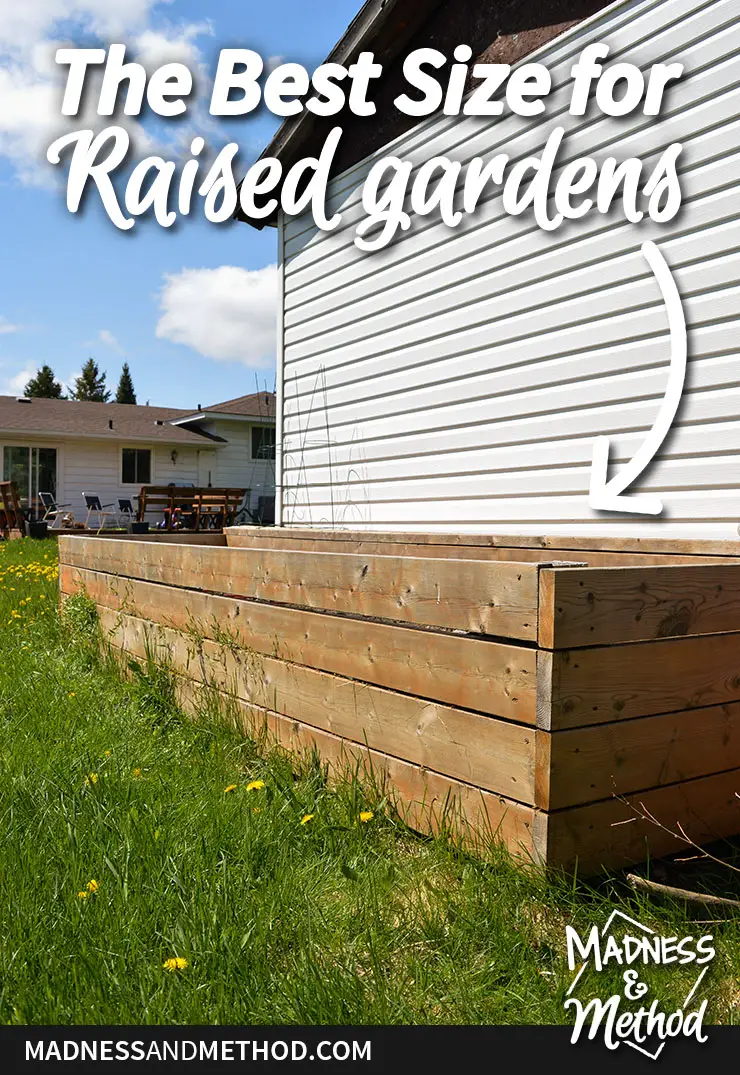
Now, I’m not saying that there aren’t weeds in raised garden beds… but man I love not having to get down on my hands and knees to pull them. (And, I’m pretty sure there are fewer weeds too!).
Between that (which is honestly the best case for building raised gardens) and having a garden that is raised above the level of wandering pets (think wild animals, dogs, children, etc.), raised gardens are definitely the way to go!
If you’re planning on building your own raised gardens, you might be wondering how high/tall/wide to build them!
So, what are the best raised garden bed dimensions?
The Best Size for Raised Gardens
As I mentioned, we built and filled our raised garden beds 4 years ago, and I specifically chose to put them along the two sides of our shed (which measures just under 12′ long.
When determining the size of your raised garden beds, the length does not matter. Now, there may be some gardening guides that tell you what plants to plant and how much size you need for ideal growing conditions, but I’m not an expert gardener so I’m going to say again that the length does not matter.
What really matters is the depth and height!
So, if you have space – feel free to plan your raised gardens dimensions as long as you want them (just make sure your hose will reach the ends!).
(There’s one little caveat to the length that I’ll share below, but it’s not really a deal breaker).
What’s the Best Height for Raised Gardens?
Let’s tackle height first since I have some handy photos of me “working” in our garden to show you a real-life example.
Our raised garden beds are 2′ high from the outside ground to the top of the wooden boards. As you can see from the photo above, the dirt drops in a bit so is about 6″ below that – estimating about 18″ high.
See how I’m a bit hunched over? I’m an average sized 5’5″ person, and I do feel like I have to slightly bend to reach the dirt / pull weeds/plant things.
Not really a big deal, but I would not suggest building your raised gardens lower than 2 feet tall. (Assuming you’re building them to be lazy like me and not have to bend a lot!). The height of your gardens could also depend on your height, but 2′ is a good minimum (just make sure your dirt doesn’t go lower!).
By comparison, the raised gardens at our rental renovation (which I’ll share photos of next week) are the same 2′ height BUT the dirt is just as tall as the wooden part – so it’s a lot easier to reach.
(It’s very convenient that our second house came with raised gardens, they are actually retaining wall/gardens – so we definitely can’t move them!).
Now here are some photos of a much cuter model that I took yesterday morning to show off the height of the raised gardens a bit better. (And yes, it is June but the mornings are a little chilly still).
Raised Garden Height (To Keep Pests Away)
If you’re building raised gardens to keep animals out, it’s better if they are taller. There are a lot of raised garden plans online that are only a foot or so tall, but I’m pretty sure my dog would easily be able to jump into those :)
I think my issue with the height now (that I didn’t really care about before) is that a certain little someone is now able to reach into the raised gardens! As you can see, he loves digging around and making a mess, but I’ll need to put a stop to that once we get all our plants in.
There are only a few little rows planted in the middle, so he can avoid them for now. And next week I’ll hopefully have everything in place to share how we set up the gardens this year.
I think if our gardens were just 6″ taller (or one more wood board), that he wouldn’t be able to reach/look around as much and it would be less of a “fun” place to play. (And/or that by the time he reaches that height, he’ll listen a bit better… ha!)
A Note on Raised Garden Length
Remember when I mentioned that the length of your garden beds didn’t matter? One question I was asked recently is if the weight of the dirt has pushed out the boards at all.
We built our raised gardens with almost a full 12′ span only supported on the ends, and once we filled them with dirt, we did get a tiny bit of movement outwards, but not a lot.
I’ve shared our garden layouts each year since (check out 2016 here, our 2017 placement and 2018 here) and you can see that they’ve looked almost the same since day one. We get a LOT of snow where we live (this past winter was brutal, our roof almost came in!) so these garden beds have to take a LOT of extra weight throughout the year, but especially in the spring once everything starts to melt.
SO what I’m saying is – that if you do build long raised garden beds (and I’m talking longer than 12′ across), you may want to add a centre post if you’re worried about more deflection.
We haven’t refilled the gardens with dirt since the first time (I have strawberry plants that come back each year and I don’t want to bury them!), but I’m sure that it would handle the extra weight.
(I just need to weed in between the boards, which makes it look worse, ha!)
Oh, and said toddler has also climbed in them (and the dog… and me) – possibly all three of us with the snow :)
What’s the Best Depth for Raised Gardens?
Okay, this is probably the MOST important dimension when it comes to building your raised garden beds, whether you make them 20′ long, 4 feet high, 1 foot high, whatever!
By “depth” I mean the distance from the front of the raised garden bed to the back. Most people might be wondering how wide a raised garden should be, and this is what I mean by depth.
The ideal raised garden width/depth will be different if you have garden beds in the middle of your yard vs. raised garden beds that are built along something, like a shed or a fence. (Depth might also depend on your height/size, but let’s go with my average size of 5’5″ with normal arms).
For a raised garden bed that is built along a fence or a shed, you want the depth to be a maximum of 36″. Our dirt is at 35″ and I find it the perfect length for me to reach over with having to really exert myself too much.
The raised gardens at our rental renovation are 42″ deep from front to back, and I have a hard time reaching over to pull weeds in the back. You can always test this yourself ahead of time before you commit to anything BUT remember to put your taller plants in the back so you can reach your veggies/fruits too.
Non-Attached Raised Garden Dimensions
For raised gardens that you can walk around both sides, I would argue that a depth of 48″ would be ideal (with possibly going up to 54″ – assuming you have proper structural support and don’t mind a little extra reaching). I’ve never personally used these types of gardens, so I’m going by my best guess if I pretended that my shed wasn’t there.
Now, you may argue – but regular/ground gardens can be as deep/wide as you want (my parent’s garden is like 20×40 or something crazy!). And yes, in regular gardens you have the luxury of walking wherever you want to pick your plants. But in raised gardens (and especially the taller ones), you shouldn’t ever have to climb up into them to pick your plants.
Because umm, that’s the point of building raised gardens in the first place, so you don’t have to bend over to your knees to pull the weeds!
I hope these tips with real-life examples have better explained what I think is the best size for raised gardens. All I know is that if we ever get a house without a raised garden, I’ll be putting one or two in as soon as we get the chance!
Other Resources:
Let me know if you have any more questions about raised garden beds! And make sure to check out my previous posts about building raised gardens, filling and planting your gardens, and our past veggie placements from 2016, 2017 and 2018.
I can’t say that I’ve found the ideal setup yet, but maybe 2019 will be our year!

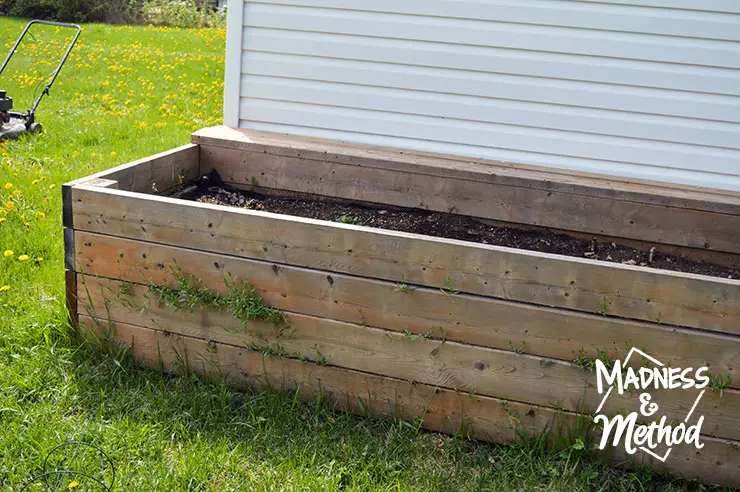
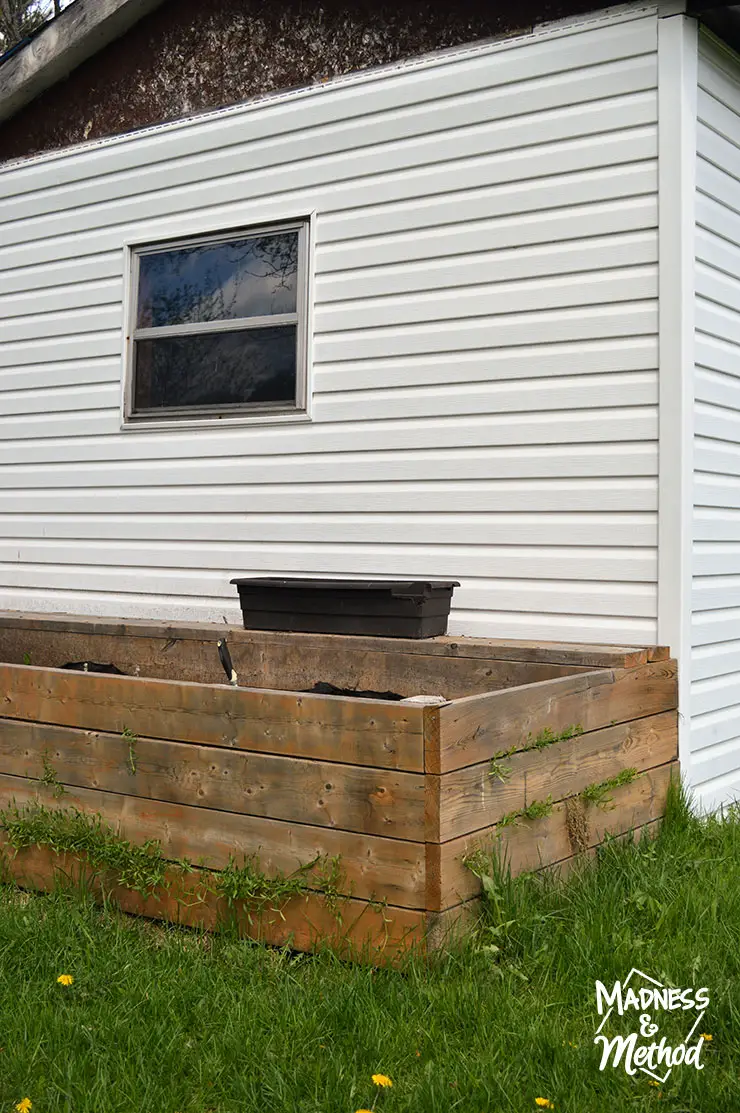
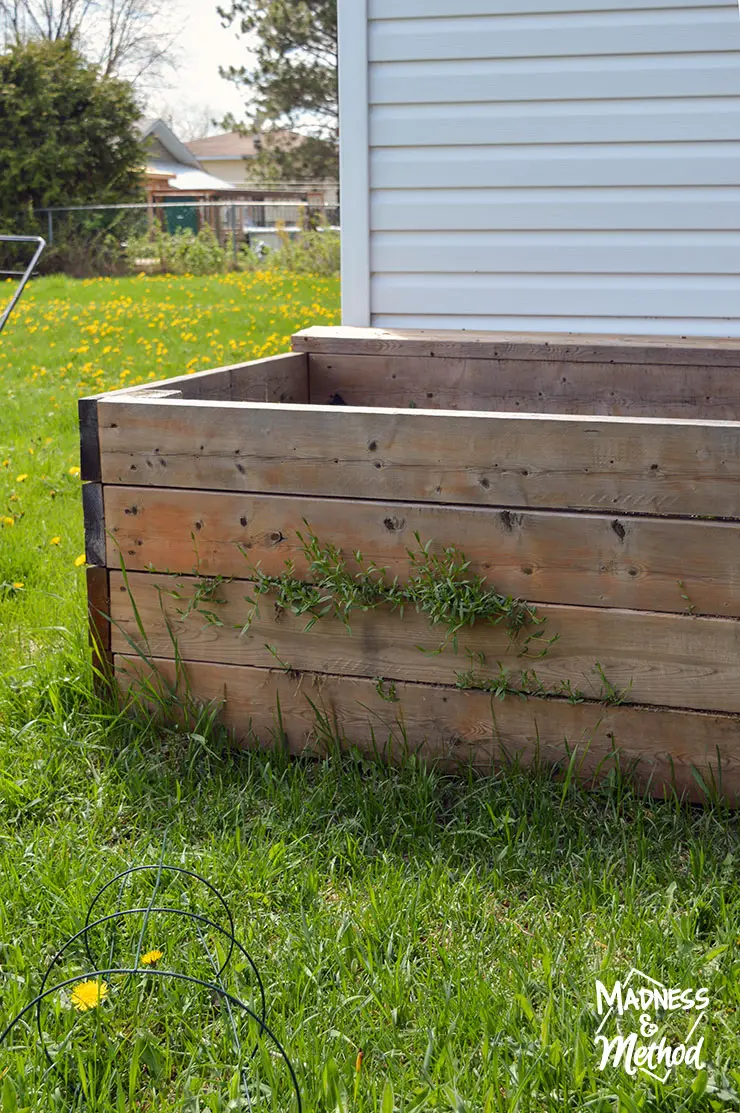
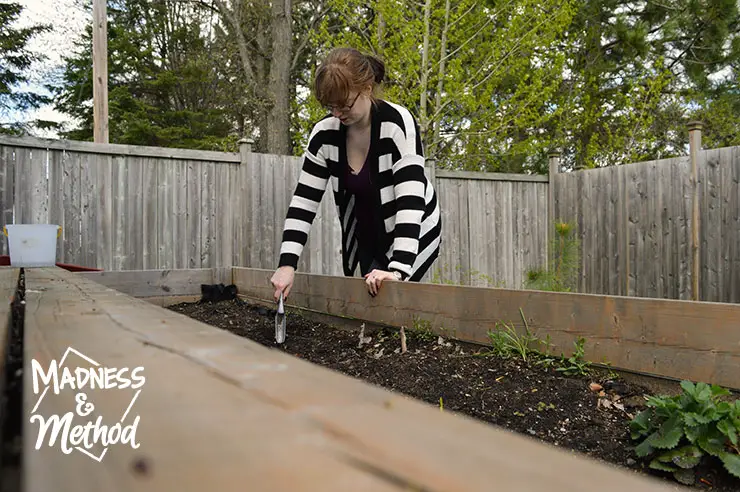
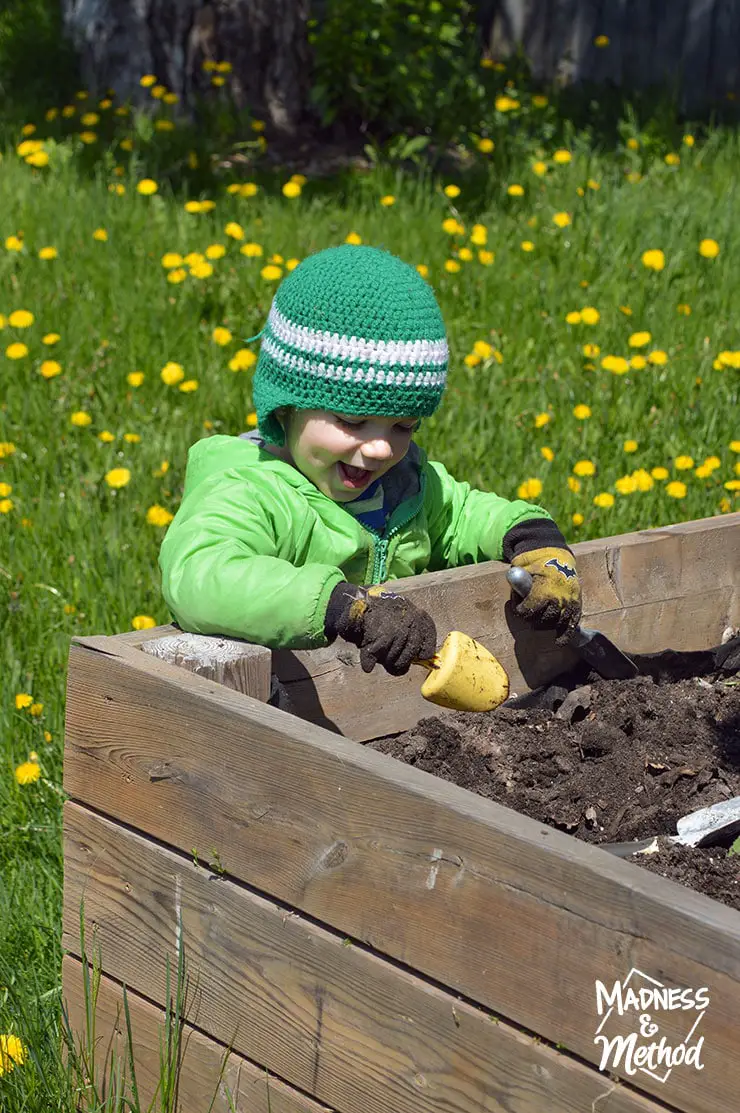
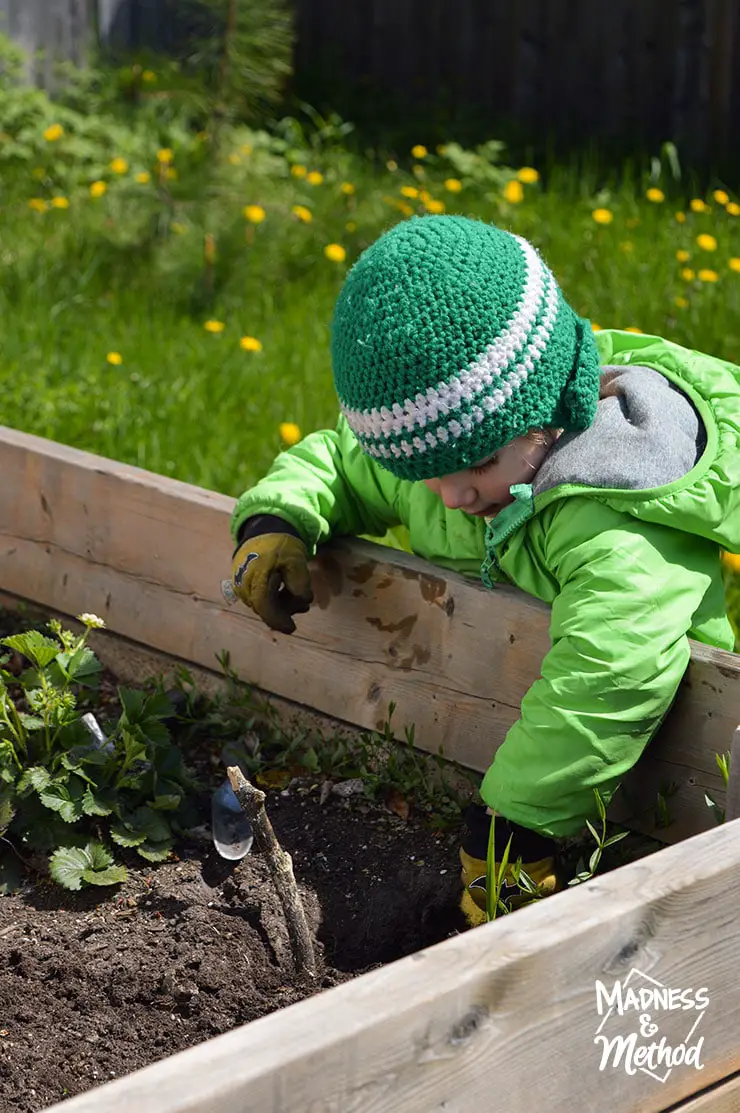

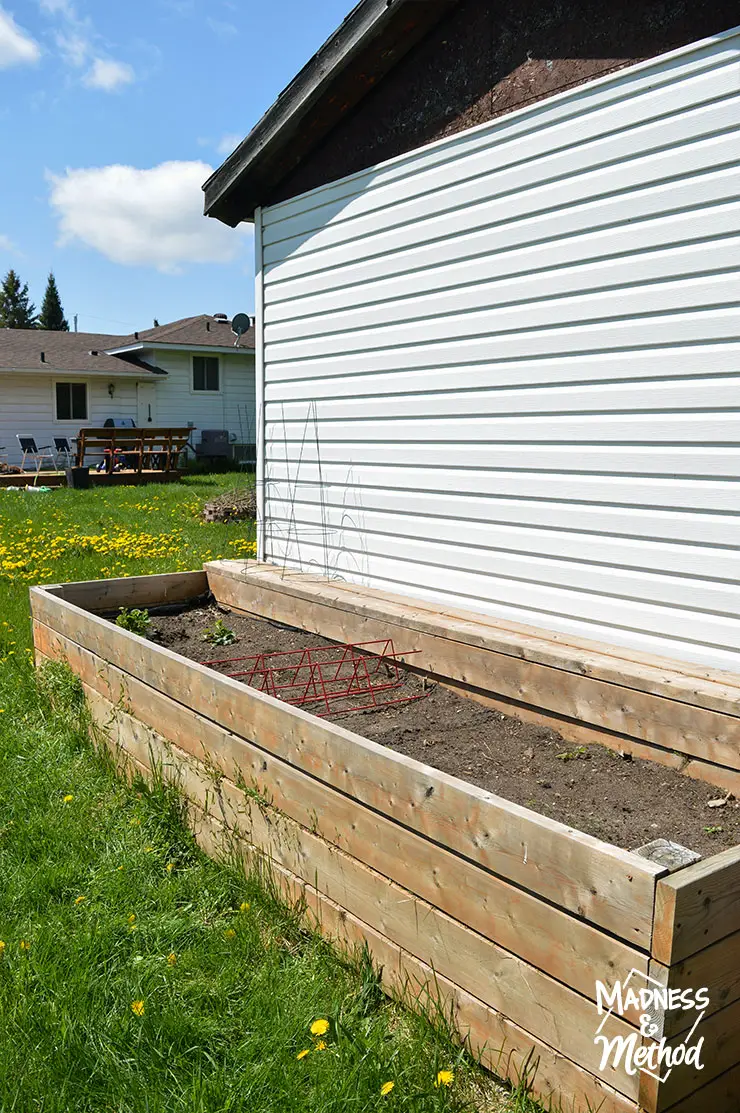
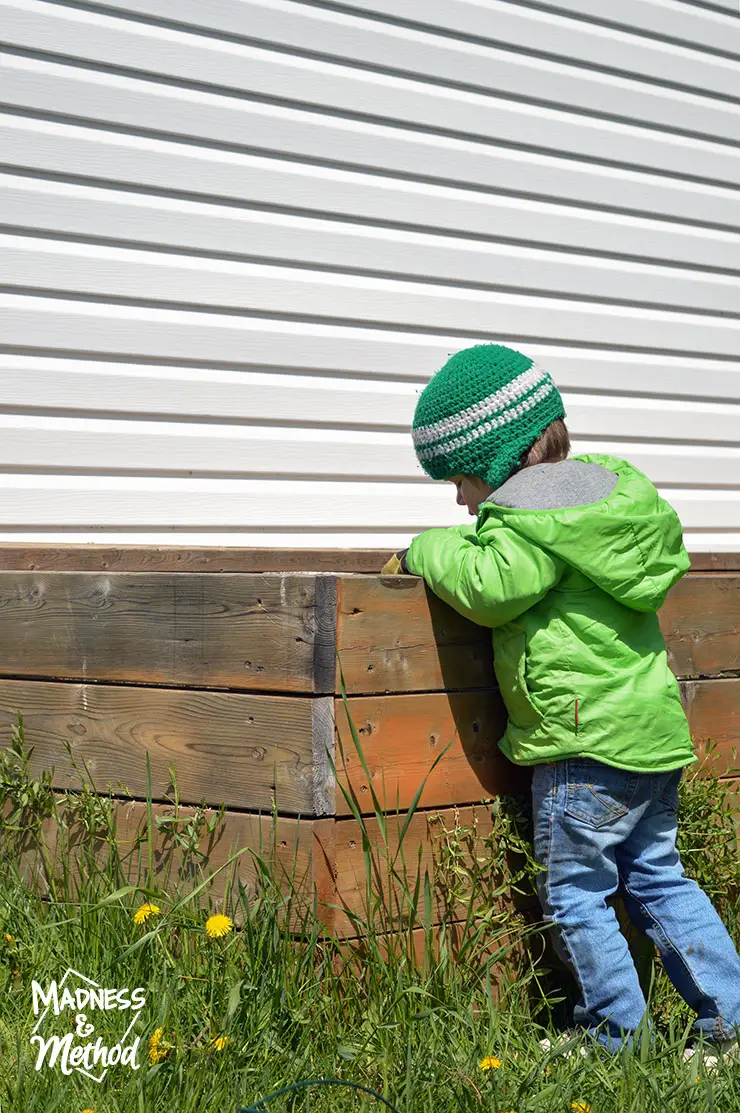
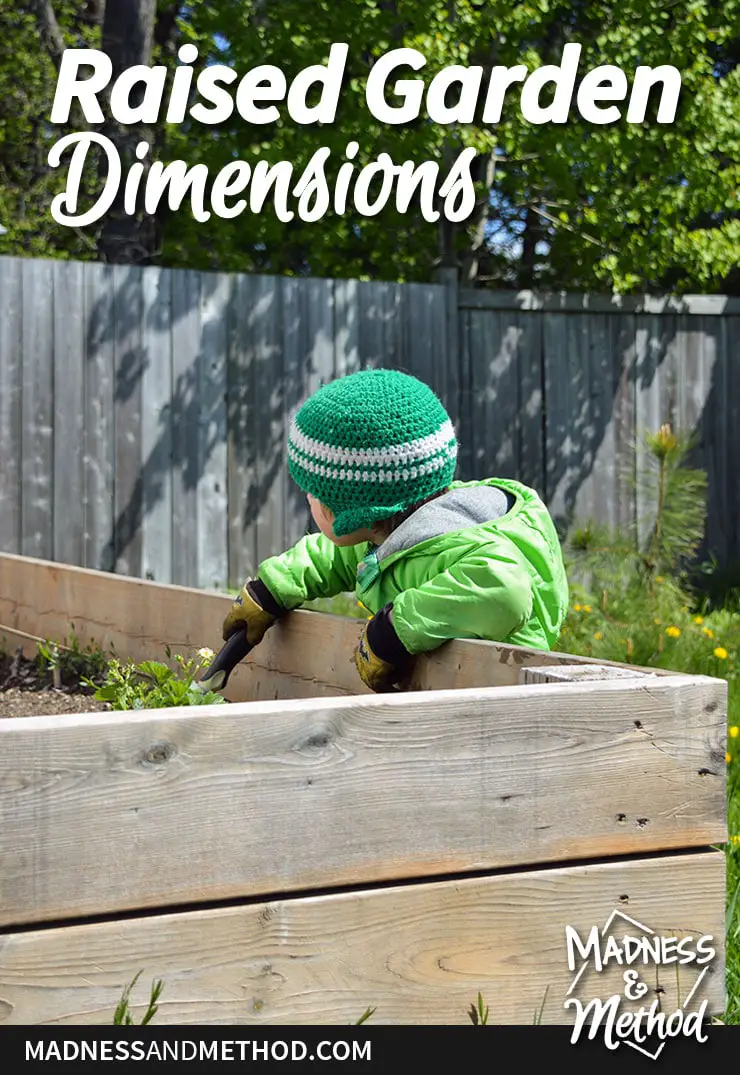

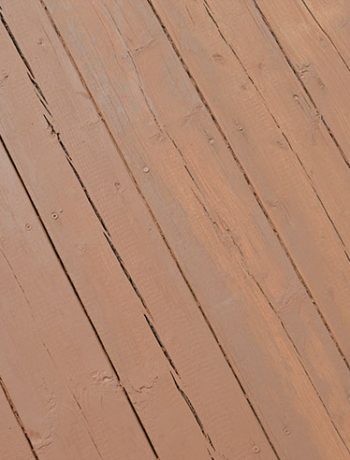
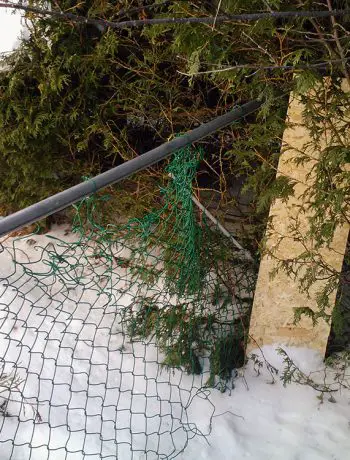
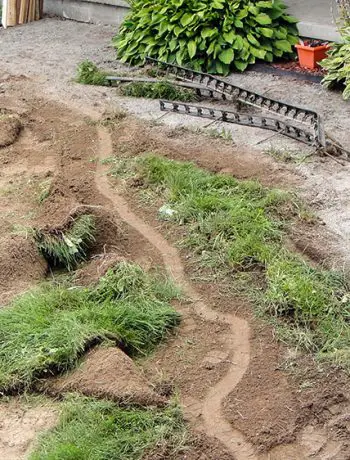
3 Comments
Ed
May 19, 2020 at 10:56 pmHi Nicole! I have two “portable” resin planting beds that I use for jalapeños, herbs, and mint each year. This year, I want to plant a few raspberry plants but everyone is saying they’ll grow ok in a large pot, but suggest putting them in the ground instead. If I built a big permanent bed like yours, you think that would be almost as good as planting them in the ground? I was thinking of going across the width of my garage which is 18 – 20′. Haven’t decided on depth or width yet. I was planning on using landscaping paver blocks, but that would incur over $200 in costs. Not to mention the labor involved. Not sure if building something like yours would be easier with the wood or not. I’m not necessarily looking at the cheapest way out, but I am looking at the easiest way out! Any thoughts?
Nicole
May 20, 2020 at 9:06 amHello Ed – so, we have an annual strawberry plant that comes back every year in one of our beds, so I think it could work for raspberries too. We also have some raspberries in our yard and I find that they get pretty tall (so maybe a bed lower to the ground might work out). In my experience, the raspberries (we have at least) are pretty resilient so should grow almost anywhere.
Ed Ronczkowski
May 21, 2020 at 11:44 pmI decided to just plant the raspberries in the ground. Menards has these 6″x36″ mini fences that have spikes at either end and I bought enough to form a little “fence” around my new garden. Good enough. Couldn’t justify incurring all the costs and labor involved in installing landscaping blocks. I have enough work ahead of me digging the grass out that’s there! Lol.